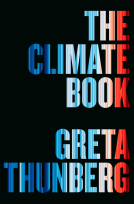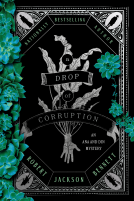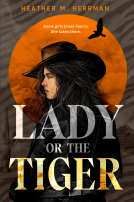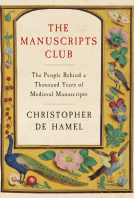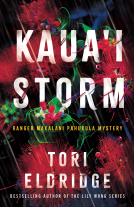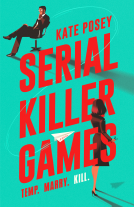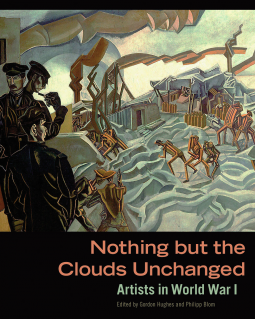
Nothing but the Clouds Unchanged
Artists in World War I
by Edited by Gordon Hughes and Philipp Blom
This title was previously available on NetGalley and is now archived.
Send NetGalley books directly to your Kindle or Kindle app
1
To read on a Kindle or Kindle app, please add kindle@netgalley.com as an approved email address to receive files in your Amazon account. Click here for step-by-step instructions.
2
Also find your Kindle email address within your Amazon account, and enter it here.
Pub Date Nov 25 2014 | Archive Date Jun 01 2015
Getty Publications | Getty Research Institute
Description
The volume accompanies a related exhibition on view at the Getty Research Institute Gallery from November 25, 2014, to April 19, 2015.
A Note From the Publisher
Available Editions
| EDITION | Other Format |
| ISBN | 9781606064313 |
| PRICE | $40.00 (USD) |
Average rating from 3 members
Featured Reviews
 Librarian 105878
Librarian 105878
I believe that time and time again, artists have created some of the most thought-provoking, moving art during times of war. Not just art as in paintings and drawings and sculpture, but all the arts … music, theatre, dance, etc. This is not a call for war so that we can produce significant works of art.
In conjunction with an exhibit, the Getty Research Institute has produced this book, Nothing but the Clouds Unchanged: Artist in World War I, which takes a look at the physical and psychological effects war has had on a variety of artists. The “war to end all wars” changed hundreds of thousands of lives and brought a whole new horror to the world, and the artists represented here shared that horror in the only way that each could.
Editors Gordon Hughes and Philipp Blom have separated the book into two parts so that we can experience the war through the eyes of the artists from both the Allied Powers and the Central Powers points of view. Each article is written by a different person and draws from the artists’ notes, letters, drawings, paintings, and comments from fellow soldiers. We learn (as much as is possible) how the war impacted these people and we get the bonus of seeing how they interpreted these reactions in their art. It’s a truly fascinating look at our society and our abominations.
Surprisingly, and somewhat embarrassingly, I was not familiar with most of these artists. In general, I think that I found the Central Powers artists to be the most moving, and typically dark and bleak. However, two artists with whom I was slightly familiar but couldn’t have told you much about were Georges Braque and Wyndham Lewis, part of the Allied Powers. They both caught my eye with their work and their stories.
There is a nice variety to the art and artists represented.
I have, for a very long time, been a fan of the dadaist/surrealist art movement (which came about as a result of WWI), and as such, have also been quite a fan of artist Max Ernst. Ernst is represented here, but I found it strange that, rather than some of his remarkable paintings, it is his collage/sculptures that are displayed (there is one painting [Towers] and three sculpture/collages included). Had I not already been familiar with Ernst, this book would have given me a completely different impression of him and his work. Which makes me wonder about some of the other artists. Does this book accurately reflect their work?
All in all, this is a wonderful look at history and war through the eyes of artists who are able to convey their concerns and fears through art.
The book is made up of the following:
Introduction by Thomas W. Gaehtgens
“Forces Unbound: Art, Bodies, and Machines After 1914″ by Philipp Blom
“‘In Dead Men Breath': The Afterlife of World Way I” by Gordon Hughes
“André Masson: Into the ‘Humus Humaine'” by Charles Palermo
“Fernand Léger: Objects, Abstraction, and The Aesthetics of Mud” by Daniel Marcus
“Georges Braque: Artilleryman” by Karen K. Butler
“Wyndham Lewis: ‘Art-War-Art'” by Leo Costello
“‘In the Midst of the Strange Country': Paul Nash’s War Landscapes” by Anja Foerschner
“Carlo Carrà’s Conscience” by David Mather
“Otto Dix: War and Representation” by Matthew Biro
“Ernst Ludwig Kirchner: An Inner War” by Thomas W. Gaehtgens
“Killing ‘Max Ernst'” by Todd Cronan
“George Grosz and World War I” by Timothy O. Benson
“Käthe Kollwitz, The First World War, and Sacrifice” by Joan Weinstein
“László Moholy-Nagy: Reconfiguring the Eye” by Joyce Tsai
“Oskar Kokoschka: The Great War and Love Lost” by Beatrice von Borman
“Oskar Schlemmer’s Triadic Ballet and the Trauma of War” by Paul Monty Paret Appendix: Selected Cultural Figures Who Served in World War I by Hannah Fullgraf with Betsy Stepina Zinn
Looking for a good book? Nothing But the Clouds Unchanged is a book that will appeal to art and history students.
I received an electronic copy of this book from the publisher, through Netgalley, in exchange for an honest review.
